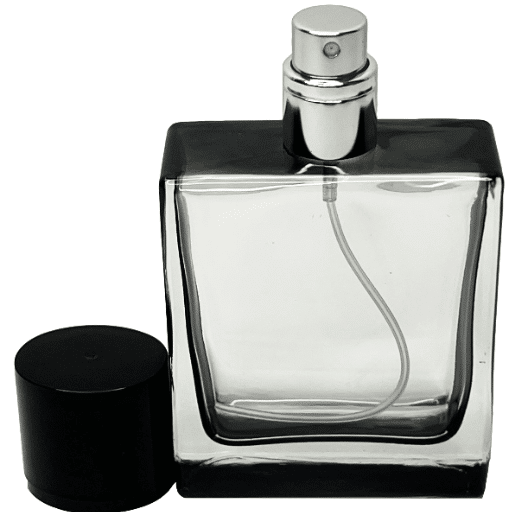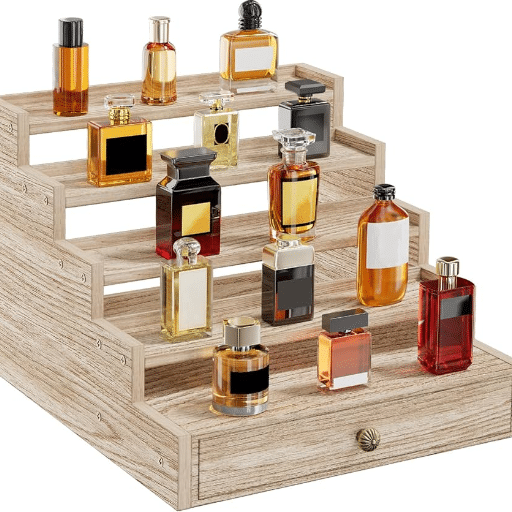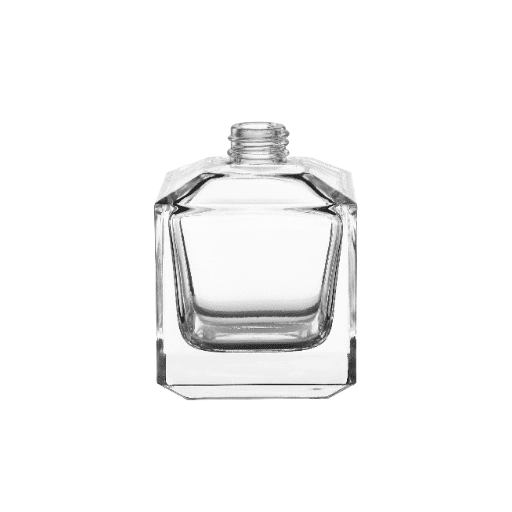From ancient times, perfumes and Cologne have incense and are entwined with cultural irreplaceable identity part and culture as well. However, the story of fragrance embraces art, and innovation throughout the burning alliance of ancient Egyptians to the luxurious scents of France. You might ask yourself what goes through the development and history of perfumes to give us the ideal self-expression.
This article looks into the elaborate history of perfumes filled with scents while guiding you through the evolution of perfume and Eau de Cologne, its decorations, and archeology. Upon reading, you will gracefully uncover scent-making. Henceforth shaping humanity’s surprising encounters revolving around the world–now that’s sound perfumes!
What is the history of perfume?
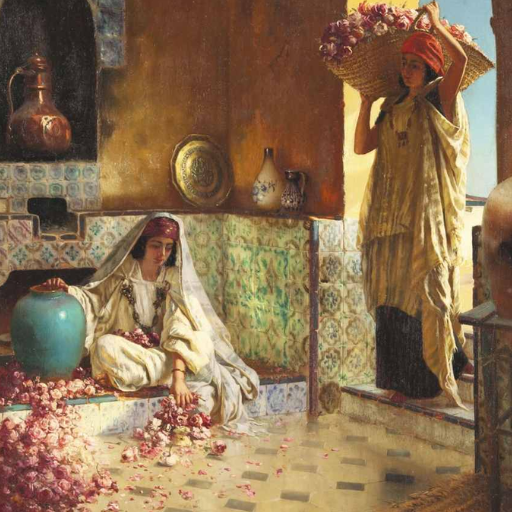
Ancient civilizations such as Mesopotamia, Egypt, and the Indus Valley were known for their creations, which makes the history of perfumes trace to thousand years back. Natural ingredients like flowers and herbs were combined to make fragrances and incense was burned as an offering to deities. Egyptians practiced making perfumes for religious purposes, daily use and even during funerary activities. From there, Italy and Greece took the traditions up a notch and further refined the art of perfume production, where it became heavily relied on for expansion throughout Europe during the Middle ages through trade and cultural exchange. Eventually, perfumes turned into items of status and luxury in the Renaissance era and France became famous for perfume innovation. Until this day, perfume is heavily relied on to for the expression of art and personal identity.
How did perfume originate in ancient Egypt?
In ancient Egypt, perfume was deeply intertwined with religion, daily life, and societal customs. The use of fragrant oils and balms was practiced as early as 3500 NE. The scent was thought to be the “sweat of the gods,” and perfumed items were crucial in the rituals dedicated to the gods and the dead. Temple rites included sacrifices with incense, frankincense and myrrh, along with the burning of aromatic oils. Additionally, aromatic oils were used for the purification and preservation of mummified corpses.
Egyptian perfume creation was artful; they knew how to extract essential oils from flowers, plants, and resins. Ingredients like lily, cedarwood, and cinnamon were common as well, often mixed with animal fat and vegetable oils to create enduring fragrances. Temple craftsmen of perfumery, highly regarded, were frequently used in workshops. Precise accounts in Ebers Papyrus and similar documents unveiled the recipes for treasured scents alongside their crafting processes.
Perfume had its social and cosmetic use in ancient Egypt. It was used by both men and women to mask bad smells and for daily grooming as a symbol of wealth and status. Queen Cleopatra is well-known for taking baths and using baths and fragrances specially concocted for her. Now, ancient Egypt’s legacy in the development of perfumes is still persisting as modern-day perfumes are inspired by ancient formulations.
What role did Catherine de Medici play in perfume history?
Catherine de Medici was a notable name in the world of perfumeries, especially in Europe during the Renaissance era. She was married to King Henry II of France in 1533 and is mostly known for introducing the art of perfume-making into France. She brought along her personal perfumer, Rubus le Florentin, who created fragrances bespoke to her preferences. She wasn’t merely a luxury consumer because those perfumes helped her politically too, as they served in her attempts to gain further influence in the realm of French politics.
Le Florentin crafted perfumes with an essential oil distillation method that was new at the time. He extracted the oils from roses, herbs and even spices. Under CatherineualDemedi’s reign, perfume-making reached new heights in France France’s fame poured its perfume and it spawned new creations. Legend had it that Catherine was also the first to wear scented gloves, an attire which she is known to have dubbed, blending perfumes with fashion, and possibly also politics. Hence we can see France growing its dominance as the world’s leader in perfumes around this time.
How did Louis XIV influence the art of perfume?
Often referred to as the “Sun King,” Louis XIV dedicated his time in the 17th century to elevating perfume as an art form. Louis XIV was known for his extravagant lifestyle, which in turn fueled his love for luxury. He wove fragrance into multiple areas of court life. The Palace of Versailles became well known for the lavish use of perfumes as the king reportedly required that his spaces, linens, and even fountains be scented. This was due to the hygiene practices during that time; bathing was infrequent, and perfumes were used to conceal unpleasant scents and uphold a level of refinement.
Through collaboration with leading perfumers, he stimulated innovation in the production of perfumes by supporting advances in distillation and scent creation techniques. It is believed that his court had the epithet, ‘la cour parfumée’ since it focused on expensive and lavish fragrances all the time. Musk and other exotic floral and citrus ingredients were particularly popular. In addition, he boosted the cultivation of other essential floral crops such as orange blossoms and lavender enabling France to expand its dominance within the industry. By intertwining perfume with fashion and elegance at the court, he increased the stature of perfumery as an indispensable facet of French identity and heritage.
How did cologne evolve over time?
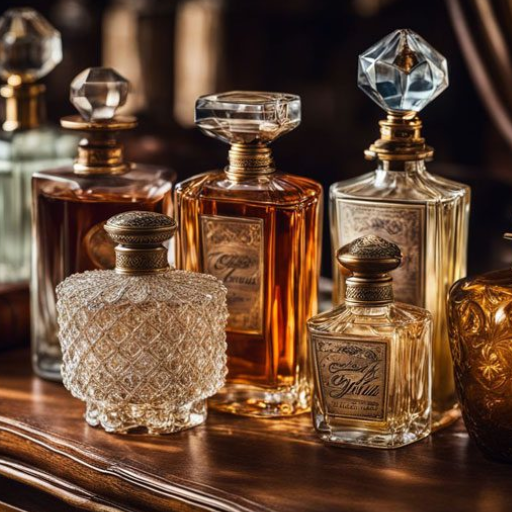
Cologne came into being in the 18th century in the German City of Cologne, where a perfumer named Johann Maria Farina concocted a blend he termed “Eau De Cologne.” It swiftly became a household name throughout Europe, and with time further evolved into a softer and more refreshing alternative to heavy fragrances. It was mainly comprised of lemon and bergamot extracts, aromatic herbs, and even alcohol. Farina was known to be rather fond of the Italian countryside, thus sought to encapsulate it’s essence by creating a fresh and softer fragrance by mixing invigorating citrus oils and florals. Now, it’s one of the most popular and preferred accessible fragrances due to it’s moderate and delicate properties.
What is the story behind cologne in 1709?
Farina’s “Eau De Cologne” captured the interest of the public, and has made it to the modern era as one of the oldest fragrances still available in the market, proving itself by enduring changing trends. These days, it’s hard not to find a cologne on sale, and it’s easily accessible to anyone. This shows how versatile of an item decided on merging vase scents it became overhead, proving it’s nurturing nature towards style and preference.
The aristocracy and elegance of Europe adored Farina’s Eau de Cologne for its multifunctionality and medicinal attributes. It personally served as a fragrance while simultaneously being used to refresh the skin, disinfect wounds, and plague prevention—a staple concern back then. Farina’s Cologne was known for refinement and sophisticated luxuries. The item’s demand skyrocketed due to how useful the formula was.
Eau de Cologne became a must-have by the mid-1700s as Napoleon Bonaparte was known to be besotted over the product and ordered hundreds of bottles regularly. Historical documents indicate that Farina’s cologne gained considerable presence among the public, propelled by Eau de Cologne’s fame during that period. It was regarded as a pioneer product in the world of fragrances.
With the With the original formula still produced under the Farina family name, Farina’s remains a reputable and cherished legacy. This essence of culture and history signifies the importance of cologne as a wonderful addition that contributed to the world of perfumery.
Who was Giovanni Maria Farina and his contribution to eaux de cologne?
Born in Santa Maria Maggiore in the Piedmont region of Italy in 1685, Giovanni Maria Farina is regarded as one of the first ever Eau de Cologne creators. In 1709, he made an aromatic fragrance he called “an Italian spring morning, of mountain daffodils and orange blossoms after the rain”—something he claimed to scented water—and gained buzz across Europe for bringing light fragrances into style.
He then moved to Cologne in Germany where he established his factory Johann Maria Farina gegenüber dem Jülichsplatz, which is considered the oldest in the world. Farina became the face of elegance after selling to national figures such as Napoleon Bonaparte, Queen Victoria, and King Louis XV. He became world-renowned for his mix of perfume containing bergamot, lemon, orange, and other herbs, leading to new standards in the fragrance industry.
The artistry of Giovanni Maria Farina is illustrated both in his Eau de Cologne and Farina’s continued production of the centuries-old formula – a tradition that has persisted for more than 300 years. Farina’s work on the global fragrance industry cements an enduring legacy.
What makes 4711 a classic eau de cologne?
4711 holds historical significance as an eau de cologne classic – a status attributed to its highly popular timeless formula. First created in 1792 by Wilhelm Mülhens, the fragrance became emblematic of the city of Cologne and has symbolized elegance and tradition ever since. Its refreshing composition featuring notes of citrus, lavender, rosemary, and neroli makes it suitable for most olfactory preferences.
As with other colognes, 4711 adheres to traditional formulation standards, maintaining a plush light, and clean scent profile complemented with an alcohol ratio of 2-5%. This distinct balance permits the fragrance to be used as both an invigorating scent and subtle aromatherapy as the calming and energizing properties of the ingredients are known.
The packaging design 4711 has been preserved throughout its history – from the turquoise and gold label to the baroque-inspired packaging – and serves as the cornerstone to its classic status and brand recognition. Furthermore, the introduction of Baroque-inspired modern reinterpretations as well as contextually appropriate complementary products demonstrate the strides the brand makes toward the innovation of their loyal and new consumers.
Supplied across 60 countries, 4711 remains one of the most recognizable fragrances globally. Its appeal is drastically timeless, wrapped in history and artistry, authentic craftsmanship may be found in each bottle. With 4711, people do not simply enjoy a smell; rather, they embrace the legacy of perfume artistry.
What ingredients are used in perfume creation?
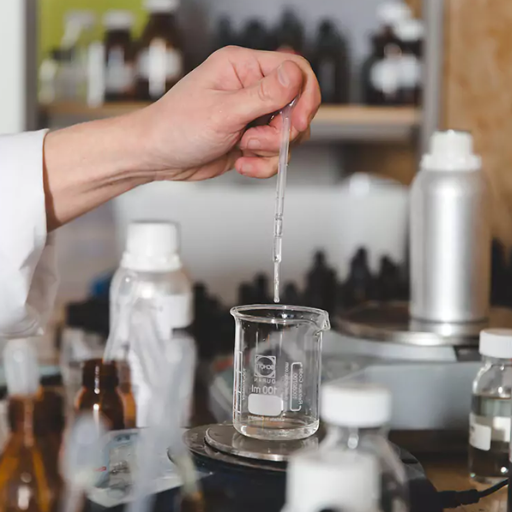
The steps of developing a perfume include mixing natural and synthetic ingredients to achieve the desired scent profile. The essential components perfumers build upon usually are:
- Essential Oils: Extracted Lavender, roses, and citrus oils are oils obtained from plants, flowers, fruits and spices. They form the primary aroma of many perfumes.
- Alcohol: Helps disperse the scent when applied to the skin. Alcohol acts as a solvent to carry the fragrance.
- Water: Added sometimes in an undetermined quantity to dilute the formula.
- Synthetic Aromas: These are lab-created compounds that replicate natural scents and enhance them for consistency.. Synthetic aromas help broaden the scope of available fragrances.
- Fixatives: These are substances that contain ambergris, musk, and some resins. They assist in scent stabilization, thereby ensuring that the perfume lasts long on the skin.
In the right proportions, these ingredients are mixed in proper amounts to yield unique and lasting fragrances.
How do essential oils contribute to fragrance?
One of the most important components in the development of perfumes is essential oils, due to their aromatic attributes and various scent profiles. Oils are obtained from plants and they capture part of the essence of plant life, including blossoms like roses, citrus fruits and even earthy roots like sandalwood. Fragrance oils are an important pillar of multidimensional fragrances because they contain several constituents such as terpenes, alcohols, and esters which determine the scent of the oil.
According to the most recent study, lavender, rosemary, and eucalyptus rank as the three most popular essential oils out of more than 300 used in perfumery worldwide. This attribute, along with the fact that essential oils are highly concentrated, makes them a crucial component in the top, middle and base notes of perfumes. Bergamot oil serves as a good example; it sharpens and refreshes the bright top notes. Patchouli and vetiver oil, however, serve to enrich the long-lasting earthy base notes.
In addition, essential oils are appealing for consumers seeking natural and sustainable ingredients in their products. Eco-perfumery is growing and has made essential oils central to the compounding of modern scents. Essential oils alone, or with synthetic oils, provide fragrances with warmth, richness, and an earthy dimension that embellishes daily life.
What are the common top notes in eau de toilette?
Top notes or head notes are the light and evaporating scents, often tumbling for something more captivating beneath them, which are noticed immediately when a fragrance is put on. They are usually light and volatile to create a fresh and impactful impression. Top notes, are used in phrases like, “The first and foremost perfume on the list is shine Unearth My Vices. It has mirror and citrus top notes.” and while the features are reminiscent and pleasing to ears.
- Citrus Notes: Bergamot, lemon, orange and grapefruit are among the most popular choices sited owing to their freshness, zesty nature and ability to uplift. With the addition of these marks alone, one feels rejuvenated and alive.
- Fruity Notes: Apples, pears along with fragrances added like of peach are as well very commonly found. They can produce a warm, sweet, playful essence that is ready to cheer up anyone.
- Aromatic Herbs: In eau de toilette compositions, lavender and basil along with mint are often considered to lend a green or herbal brightness to the singular level of the structure that is aromatic.
- Spices: Pink pepper or cardamom, some lighter spices are also included to provide simplicity and obscurity to the scent put along.
Through these notes attention of the fragrance is captured and primes the wearer while preparing for the heart and base notes that follows.
How does bergamot and citrus influence scent profiles?
Citrus oils such as bergamot are vital to fragrance-making because they introduce brightness and refreshment to a scent. Bergamot, one of the signature citrus oils, is described as sweet, slightly tart, and somewhat floral. Its uplifting and energizing properties which indicate a cheerful atmosphere make it a staple in the top notes of perfumes.
As fragrance studies note, bergamot has a wide compatibility range with other citrus oils since they blend wonderfully with herbal, woody, floral, and even spicy notes. It is estimated that 70% of contemporary perfumes incorporate bergamot and citric oils in some form which demonstrates their appeal and efficacy when balanced allure and complexity. Additionally, citrus oils have the property of natural volatility, enabling the upper layer of scents to feel crisp and ephemeral, accentuating slow transitions into the heart and base notes.
As of his living in Italy, he began developing an interest in the bergamot orange. The enhancement of straight away captured his attention when he was in a perfume shop. Not only did he get sick an extremely polished shaft that had deep roots in Europe, but also came with a captivating and soothing scent. He expanded upon this bergamot is primarily used in flavors such as Earl Grey tea, wedding cakes all over the world and countless other desserts.
How is eau de cologne different from other fragrances?
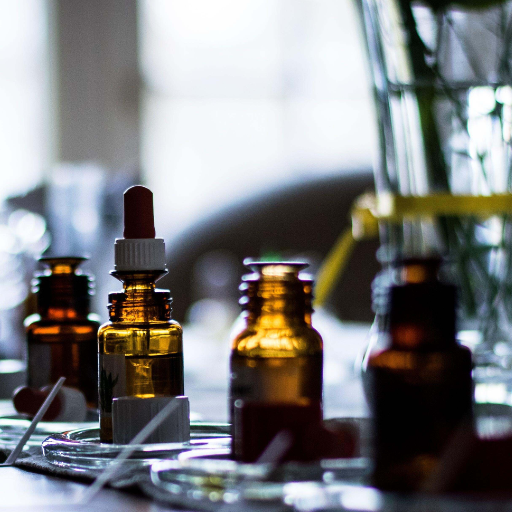
What sets each of them apart is the concentration of aromatic compounds in the perfume. An Eau de Cologne contains less than 2-4% oil concentration making it milder and less concentrated than a perfume or Eau de Parfum. It’s scent is often refreshing and citrusy meant for short-lasting enjoyment but can be used casually and reapplied several times in a day.
What defines real eau de cologne?
Real Eau de Cologne captures the focus of its traditional use, composition and place of manufacture. It is defined by its origin from Cologne, Germany as well as where it was created in the 18th century by Italian perfumer Johann Maria Farina. Anchored within authentic Eau de Cologne is a vibrant citrus fragrance of bergamot, lemon, orange and neroli topped with softer notes of lavender, rosemary and thyme.
An authentic eau de cologne is produced using a fragrance oil concentration of 2% to 5% which gets dissolved in an alcohol-water solution. The scent then develops into a refreshing, light, daily fragrance that evaporates quickly. Historically, it was often advertised as a refreshing scent. Women and men used it not only as perfume but also as a skin refresher and even an antiseptic. In contemporary times, classic Eau de Cologne is appreciated for its timelessness, elegance, and being versatility for any occasion.
How is cologne made compared to perfumes and fragrances?
The most notable difference in cologne, perfumes, and other fragrances is the concentration of fragrant oils suspended in alcohol and water. This affects intensity and longevity. Cologne usually has the lowest concentration of oil, 2% to 5% which results in a light, refreshing scent that goes away quicker. In comparison, Eau de Toilette (EDT) has a little higher concentration, 5%-15%. Eau de Parfum (EDP) is about 15% to 20% and pure perfume or Parfum has the highest at 20% to 40%.
Making cologne starts with choosing and extracting an aromatic compound from different natural sources like flowers, fruits, herbs, spices, or some synthetic alternatives. These essential oils are then combined with alcohol and water at a specific measurement to achieve the desired concentration. Due to lower oil level, cologne fragrances are geared towards fresh, citrusy, and herbal.
One of the major components of cologne is alcohol like ethanol. Ethanol is used to dissolve the oils and help disperse them when the cologne is sprayed. The blend undergoes a steeping process which can last anywhere from several days to a few weeks to ensure all components mix properly. The precise construction separates cologne from perfumes and fragrances, ensuring it is more suitable for casual or everyday wearing while keeping its charm and authenticity.
Why is eau de cologne often marketed towards men?
One of the reasons eau de cologne is mostly marketed to men has to do with its history and cultural ties. Introduced in the 18th century, Eau de cologne was presented as a refreshing and citrus-based scent. With time, it became popular with men as it was considered to be less potent than the sweeter, heavier perfumes typically worn by women. Even today, advertisers tend to market cologne and eau de cologne to men using “fresh,” “light,” and ‘easy-to-use” which are typically associated with masculinity.
Research conducted within the fragrance industry shows men tend to prefer colognes with citrus, woody, and spicy notes which of course are the standard ingredients in traditional colognes. According to a survey conducted in 2022 by some market research companies, around 68% of the respondents said they used lighter scents more frequently, reserving heavier fragrances for special occasions. Men are bombarded with advertisements and brands which as we know play a major role as well; men’s cologne is usually packaged and advertised with a bold and sleek appearance aimed at a male consumer to strengthen its relation to self-care for men. These trends illustrate the impact of consumer behavior together with historical context on distilling eau de cologne and positioning it in the market.
What are the uses of perfume throughout history?
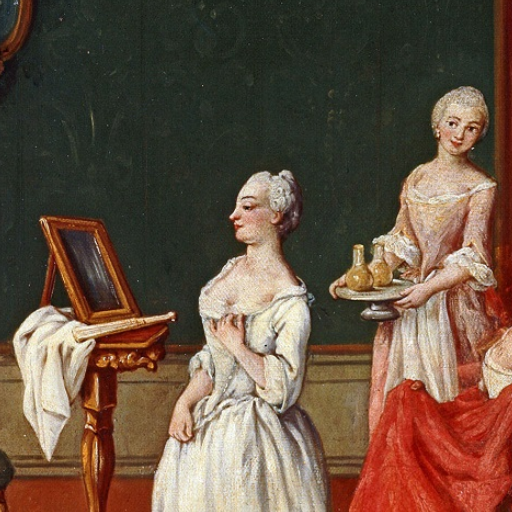
Throughout history, perfume has had a variety of uses. For example, Ancient Egyptians utilized perfumes in ceremonial rites such as ‘offering’ rituals and mummification. In addition to these rituals, perfumes denoted wealth and elevated social status. Furthermore, the Greeks and Romans integrated perfumes into daily cleansing practices, using them to scent both skin and living spaces. In Europe during the Medieval period, perfumes masked more odor, brought about by insufficient hygiene. Regardless of its intent, perfume has evolved into a vehicle for self-expression whilst maintaining cultural, spiritual, and aesthetic purposes throughout civilization.
How did perfume help during the bubonic plague?
The bubonic plague had people thinking that perfume would assist in keeping a wearer safe from getting sick. The medical belief at this time—known as miasma theory—presumed that disease was caused by stagnant air. Measures were taken to try and eliminate offensive odors which were believed to carry germs and disease. Pomanders, which are ornamental containers filled with fragrant spices or resins, could be carried around alongside strongly scented oils used to purify the air around an individual. Physicians often treating plague-stricken individuals wore beak masks filled with lavender, camphor, and cloves to ward off poisonous air, which is why these masks are referred to as “plague doctor” masks.
Additionally, in the 14th century, perfumes and incense derived from cedarwood, rosemary, and frankincense were routinely dispensed in the street for precautionary reasons. Regardless of it not preventing the plague’s spread, such acts confirm the intention to contain the outbreak with the knowledge and resources available at the time. Research demonstrates that the cause of the bubonic plague was Yersinia pestis bacteria, while the need for perfume exemplifies the rationale to fight health threats and soothe one’s nerves.
Why was cleanliness associated with perfume?
The relationship between cleanliness and perfumes is traced back to certain historical customs and practices. In the Medieval and Renaissance periods, water was believed to be a primary source of disease, so regular bathing was vigorously discouraged. People started to mask body odor with scented oils and perfumes instead to maintain some sense of cleanliness. Moreover, during these times, the wearing of perfume had a socio-economic significance in demonstrating how someone genuinely took care of their personal hygiene amidst an environment where hygiene standards were severely lacking.
Later scientific advancements proved that pleasant scents could be psychologically linked to cleanliness. Studies on odor perception suggest that pleasant smells, even in the absence of true cleanliness, enhance the perception of something being fresh and pure. This explains why cleaning agents were once disguised with perfume to make them seem more hygienic. Unlike earlier times, when industrial production of soap started in the 19th century, perfumes were not only added to soaps but also cleansing agents. There was a strong societal perception that braded cleaning products and perfumes not only implied cleanliness but enhanced the essence of being clean. Today, over 80% of personal care products and household cleaning items do add some sort of fragrance, further supporting the perception of hygiene and demonstrating the impact of this historical connection.
What are the modern uses of perfume?
In contemporary society, perfume serves multiple functions, extending beyond merely pleasing the olfactory sense. For my part, fragrance serves to enhance my mood as well as express my individuality. In addition, perfume can stimulate certain memories and leaves a lasting mark during social or work engagements. Moreover, perfumes serve as an aromatherapy tool aimed to promote relaxation or help people focus, while using fragrance in homecare products brings an extra feeling of comfort to daily life.
Reference Sources
I found some studies and resources related to the history of perfume and eau de cologne. Here are the highlights:
-
- Explores the development of nano-perfumes and their role in the fragrance industry.
- Provides a brief history of perfume innovations, focusing on technological advancements like nanoemulsions.
- Discusses preparation methods and future trends in fragrance delivery systems.
-
- Examines the cultural and societal influences on perfume packaging design.
- Mentions the different concentrations of perfumes, including eau de cologne, and their historical context.
- Highlights the evolution of fragrance categories and their market positioning.
-
The history of aroma chemistry and perfume:
- Provides a comprehensive overview of the history of aroma chemistry and its impact on perfume development.
- Discusses historical figures and their preferences for specific fragrances.
- Explores the cultural significance of perfume throughout history.
Frequently Asked Questions (FAQs)
Q: What is the fascinating history of perfume and eau de cologne?
A: The history of perfume and cologne dates back thousands of years, with ancient civilizations like the Egyptians and Romans using scented oils and balms. The specific history of eau de cologne began in the 18th century when an Italian perfume maker named Giovanni Maria Farina created the original eau de cologne in 1709. This refreshing eau de cologne was intended to capture the essence of an Italian spring morning, with notes of citrus and herbs.
Q: How did the name eau de cologne originate?
A: The name eau de cologne originated from the city of Cologne, Germany, where the original eau de cologne was first produced by Giovanni Maria Farina. The term “water of cologne” or “aqua mirabilis” was used to describe this fragrant and versatile product that became popular across Europe.
Q: What role did Jean Baptiste play in the history of eau de cologne?
A: Jean Baptiste, a relative of Giovanni Maria Farina, played a significant role in spreading the popularity of eau de cologne throughout Europe. As a skilled perfume maker, he helped to refine the formulation and marketing of this fragrance, making it a staple in royal houses in Europe.
Q: What ingredients were commonly used in the original eau de cologne?
A: The original eau de cologne contained a blend of citrus oils, including those from orange leaf, lemon, and bergamot, along with herbs like lavender. These ingredients were chosen for their refreshing and invigorating qualities, creating a light and uplifting scent.
Q: How did perfumery evolve by the end of the 19th century?
A: By the end of the 19th century, perfumery had evolved significantly, with advancements in chemistry allowing for the creation of synthetic fragrances. This period saw a diversification in the type of perfume available, including more complex and long-lasting scents, expanding beyond the traditional eau de cologne.
Q: What were some historical uses of eau de cologne beyond personal fragrance?
A: Historically, eau de cologne was used for more than just personal fragrance. It was believed to have medicinal properties, such as being able to ward off bubonic plague. Known as “miracle water,” it was used in various forms for its supposed health benefits.
Q: How did perfume bottles contribute to the story of perfume?
A: Perfume bottles have played an important role in the story of perfume, serving not only as functional containers but also as decorative art pieces. Over time, they became more elaborate and artistically designed, reflecting the luxury and value associated with the perfumes they held.
Q: What is the significance of the location Obenmarspforten in the history of eau de cologne?
A: Obenmarspforten is significant as it was the location of Giovanni Maria Farina’s shop in Cologne, where he first produced and sold his original eau de cologne. This site marked the beginning of the widespread popularity of this iconic fragrance.
Q: How did the royal houses in Europe influence the popularity of eau de cologne?
A: The royal houses in Europe played a crucial role in popularizing eau de cologne. Figures like King Louis XIV were known for their love of fragrance, and their patronage helped establish eau de cologne as a fashionable and desirable product throughout the continent.

